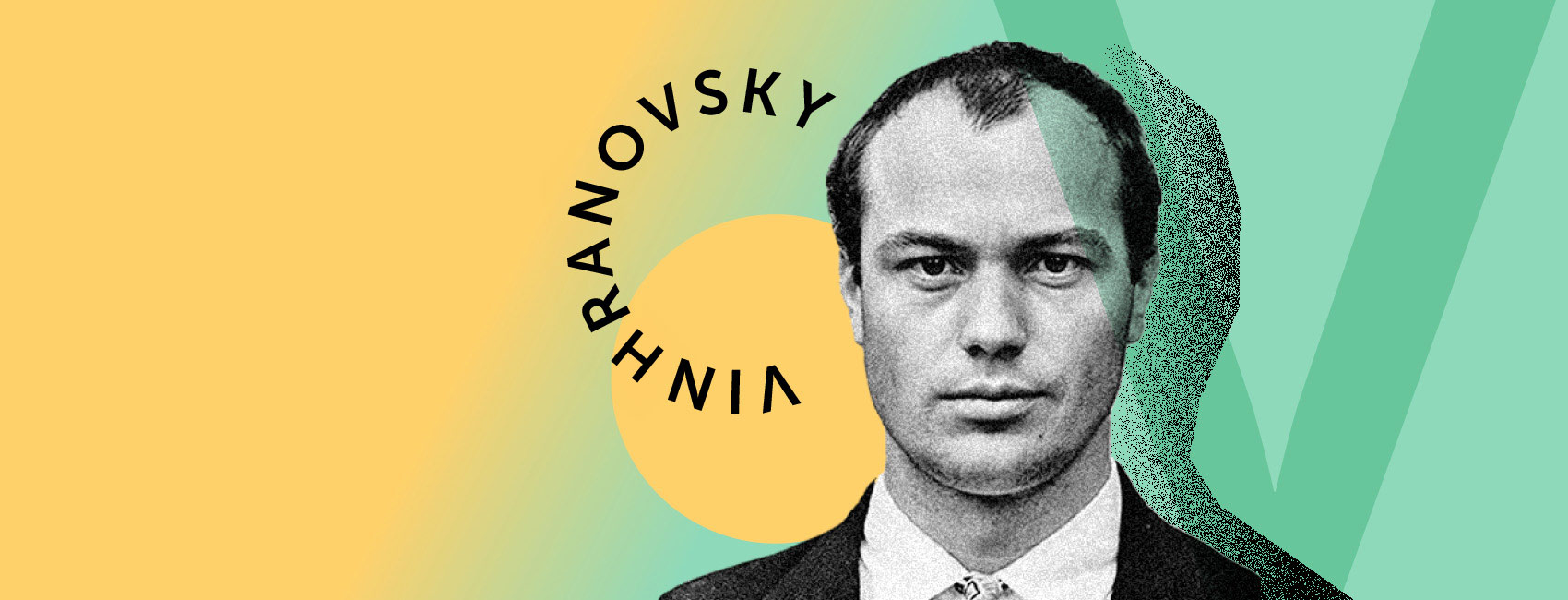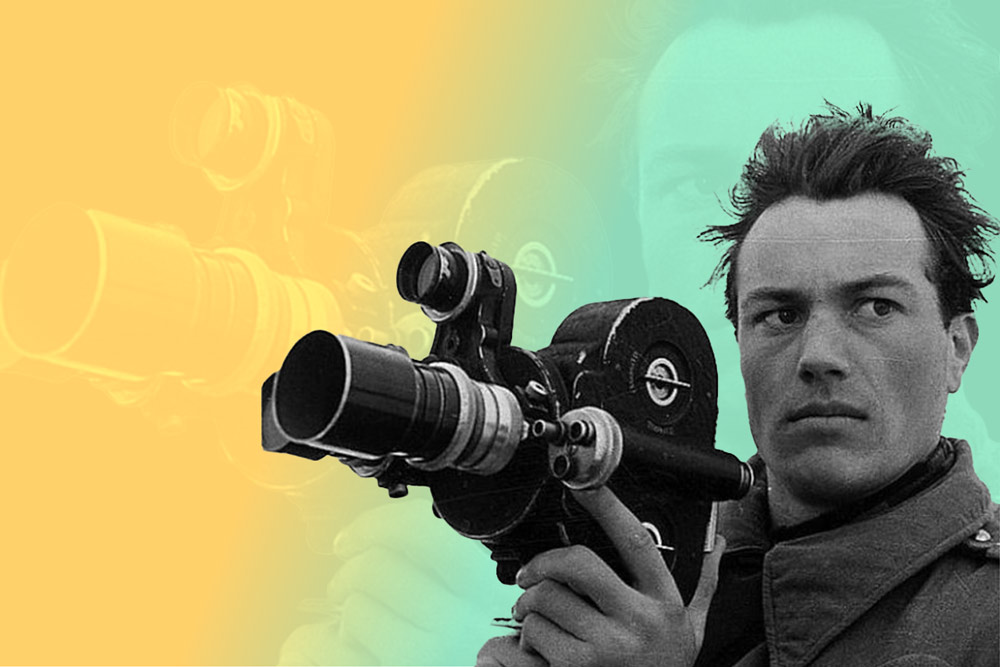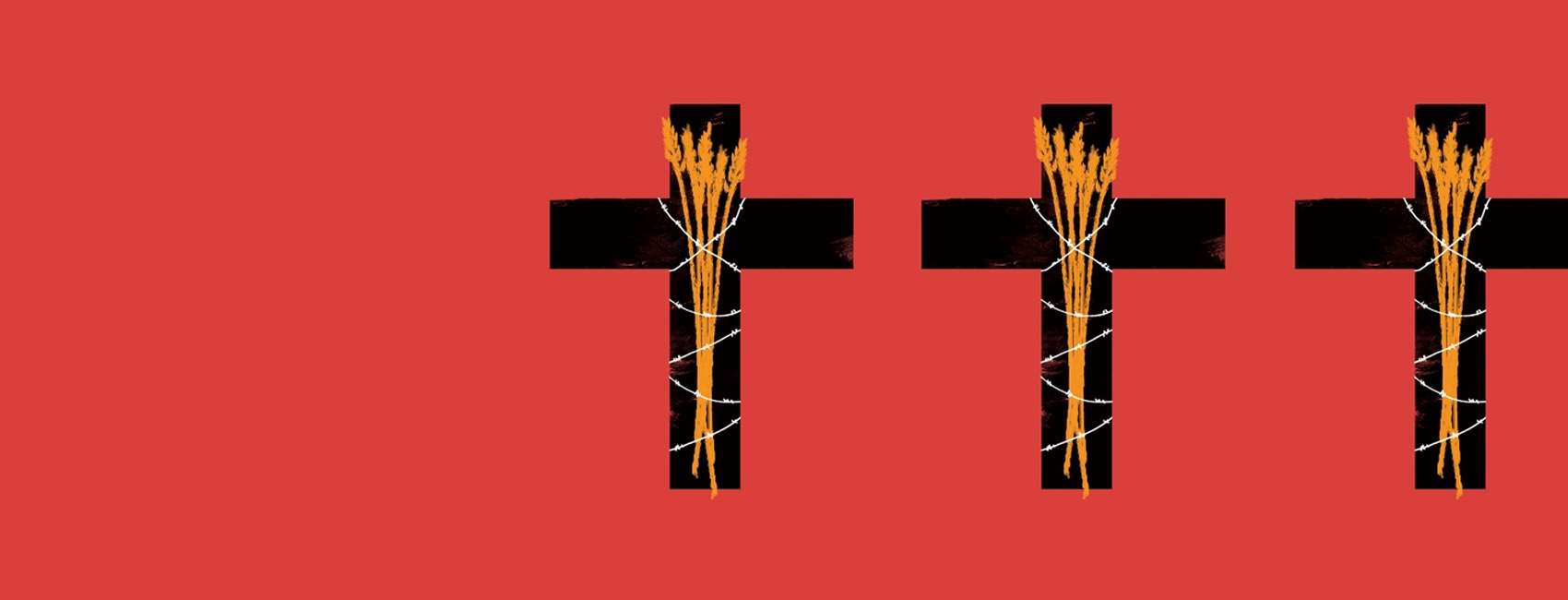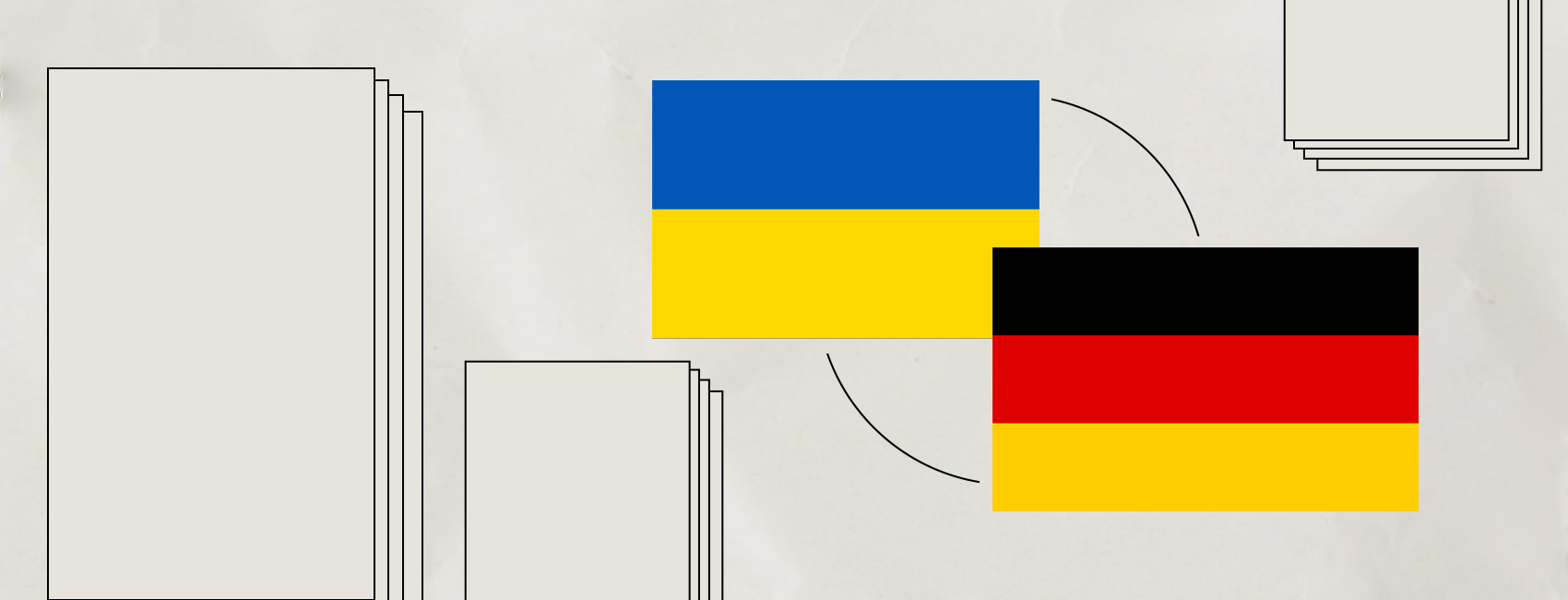* ESC - close the search window
Chytomo Picks
Mykola Vinhranovsky — a poet in poetry, in prose, in life
17.09.2024
Mykola Vinhranovsky believed that his novel “Severyn Nalyvaiko” was his magnum opus. “That novel was I,” he said. However, in that novel he portrayed not only himself but also the nature and spirit of Ukrainians. He managed to connect the mythological Ukraine with the real one without a conflict. The sometimes abstract concept of a people had a very concrete meaning for Vinhranovsky, as he looked his people in the eye every morning when he started shaving. In “Severyn Nalyvaiko,” he expressed a people. And most importantly, he removed the stigma of doom from the tragic history of Ukrainians.
A steppe childhood in times of hardship
Vinhranovsky was born on November 7, 1936, in Pervomaisk city in the Mykolaiv region of southern Ukraine. Despite his urban domicile, his childhood was rural — his house was far away in the steppe. These vast steppe areas and the peculiarities of southern Ukrainian nature had a decisive impact on the formation of the future artist’s personality, manifesting in the breadth of his character, his inclination for “Cossack freedom” in his life and work.
Three years before Vinhranovsky’s birth, Ukraine survived a huge tragedy — the Holodomor of 1932–1933, which was deliberately organized by the Soviet authorities to break and subdue the spirit of Ukrainians. In Pervomaisk, at least 1,500 people died of this artificially created famine. When Vinhranovsky was not yet even five years old, World War II hit his home — another great disaster. Later, his generation would be called “Children of the War,” and in his poem “And There Are the People,” Vinhranovsky wrote: “We exist again. We are the late ones. The latest ones / Who grew up from skinny mothers / In a chopped down garden.”
From the countryside to the capital, Dovzhenko for life
Vinhranovsky went to school during the occupation. After completing his secondary education in 1955, he enrolled in the Kyiv Institute of Theatre, studying acting and directing.
At that time, Oleksandr Dovzhenko, a Ukrainian Soviet film director whose silent film “The Earth” (1930) had received worldwide recognition, arrived in Kyiv. For some time, Stalin favored Dovzhenko, but the “leader of nations” did not like his film “Ukraine on Fire” (1942), and the artist found himself in disgrace — he was banned from leaving Moscow, which was a real punishment for him, as he wanted to return to Ukraine and film there. Dovzhenko was looking for young talent in Ukraine, and he was allowed to teach his own class at the All-Union State Institute of Cinematography. He liked the young Vinhranovsky a lot and took him to Moscow.
According to eyewitnesses, during the five years he spent in Moscow, Vinhranovsky continued to speak his mother tongue, even answering questions during lectures in Ukrainian.
The prominent film director became not only a teacher and mentor to Vinhranovsky but also like his second father (there were even rumors in Moscow that Vinhranovsky was his son): He invited the young man to his home, helped him financially, and chose him to play the leading role in the feature film “The Story of the Flaming Years” (which he began to shoot, although Yuliya Solntseva completed the film).

Vinhranovsky recounts his experiences at that time in his autobiographical essay “A Year with Dovzhenko” and his short novel “Transfer.”
RELATED: Vasyl Barka: Conservative modernist and Holodomor survivor
Poetic debut and first fame
In 1961, Vinhranovsky returned to Kyiv, where he would live for the rest of his life. He returned famous, as the film “The Story of the Flaming Years” was released the same year, and he also made a name for himself as a poet. His poetic debut happened in 1957 in the Dnipro magazine, but he received real recognition after publication in the Literary Newspaper (7 April 1961), and the following year his first collection “Atomic Preludes” was published, bringing him poetic fame that few poets of the older generation had.
The Phenomenon of the Ukrainian Sixtiers
The Sixtiers were a generation of Ukrainian intellectuals with a strong civic engagement who entered the cultural and political scene of the USSR in the second half of the 1950s, a period of temporary weakening of the communist-Bolshevik totalitarian regime. While Vinhranovsky was part of this generation, he was perhaps the least politicized of the Sixtiers. His contributions to the Sixtiers were artistic (and partly social) in nature. He himself expressed the opinion that there were no Sixtiers or Seventiers but only talents that should not be confined to a mere list. Indeed, Vinhranovsky was not a person or an artist from among certain group; he was standalone. And this was not a testament to his position but to his nature. At the same time, he knew how to defend his own position. When the poet was put in front of a huge, mostly hostile, audience at the Verkhovna Rada, the parliament of Ukraine, he was accused of formalism by its members. They waited for him to repent, but Vinhranovsky first asked not to be interrupted, which caused wave of disapproval in the room. He then recited a now well-known poem he had written in response to the accusations, which included the lines, “If my people are counted formally, / Then I am truly a true formalist!”
When the KGB began to crush the Sixtiers’ movement and it was time to define one’s position, Vinhranovsky did not become an outspoken dissident. Instead, he withdrew from public affairs, worked at a film studio, and continued to write and get published.
Vinhranovsky as a film director
Vinhranovsky was a certified film director. He made five feature films (his debut was a co-directed film), all in the spirit of socialist realism popular during the Soviet era, but none of them became a cinematic success. He also made documentaries — three in the Soviet period and five in independent Ukraine. This is a considerable body of work, given that there were bureaucratic and ideological obstacles in the USSR and almost no funding of cinema in Ukraine. Vinhranovsky’s “Ukrainian period” is characterized by the fact that the artist turned to Ukrainian historical figures and toponymics associated with them.
Thus, Vinhranovsky spent the nineties, which in many ways turned out to be a crisis for Ukraine, in creative activity: “Dovzhenko: Diary of 1941–1945” (1993), “Chyhyryn Is the Capital of Hetman Bohdan Khmelnytsky” (1993), “Baturyn Is the Capital of Hetman Ivan Mazepa” (1993), “Halych Is the Capital of King Danylo Halytsky” (1993), “Hetman Sahaidachny” (1999). With these films Vinhranovsky searched through the history of Ukraine, via iconic figures, for the fundamental features of the Ukrainian people, creating a potential vision for the future
Vinhranovsky as a poet
All of his poetry is watercolor, not in the sense of intimacy or sketchiness (the poet dared to create big canvases in terms of both genre and theme) but in the sense of being delicate. He did not paint with strokes, did not overlay coats of paint on top of each other, but very carefully mixed colors and hardly made any corrections. The poet categorically rejected the author’s editing; his work did not involve “laboratory work” — that is, experiments with words. If formalism, of which he was accused, was characteristic of him, it was not rational but subconscious, caused by the originality of his poetic thinking, while in terms of the means and forms of expression it remained, if not conservative, then certainly traditional.
There are very few poems in his oeuvre that have titles, although in this case the poet was probably reluctant to reduce the versatility and ambiguity of the poem to a single topic.
Vinhranovsky’s first two collections of poems, “Atomic Preludes” and “One Hundred Poems,” are a tribute to the times: The cosmism of the time and the scientific and technological revolutions are all present in these collections. He still naturally felt himself in the role of a tribune poet, a herald of truths, a singer of progress, but “quiet poetry” was not alien to him. In him were opposite but coexisting preferences: He loved everything large-scale and immense — people, events, and plans — and at the same time he admired “ordinary” people, “small” things, the tiny living creatures teeming in nature. All of this was combined with an innocent childlikeness (or childlike innocence). The critic Volodymyr Bazylevski noted Vinhranovsky’s ability to sublimate the childish into the adult and the mundane into the fantastic. His poetry (as well as his prose) is close to Ukrainian folklore and mythology. Not because of borrowed stories or allusions to them, but because of his works’ mood, tone, and atmosphere.
RELATED: Mykola Bazhan’s literature juggling and whirlpools of compromises
Vinhranovsky entered the Ukrainian literary canon quite early on, but he remains unknown to foreign readers. Some of his works were translated into Estonian, German, Georgian, Lithuanian, Czech, Slovak, Polish, Romanian and Portuguese. Most of his works were translated into Russian. There were attempts to translate Vinhranovsky’s poetry and prose into English: the anthologies “Modern Ukrainian Short Stories” (1973), “Anthology of Soviet Ukrainian Poetry” (1982) and the collection “Summer Evening” (1987). These attempts were unsystematic, primarily because the Ukrainian side made no efforts to promote Vinhranovsky’s works and the English-language translators showed no interest, as they were almost completely unaware of the state and level of Ukrainian poetry, including Vinhranovsky’s place in it.

Vinhranovsky as a prose writer
Although Vinhranovsky produced twice as much prose as he did poetry, he is remembered in the minds of readers as a poet who wrote prose. This does not mean that his prose is weak. The peculiarity of Vinhranovsky’s prose was that it was not the poet’s prose but a continuation of his poetry. For him, poetry and prose were not separate, the same as poetry and life. Vinhranovsky considered his highest hour to be the writing of the novel “Severyn Nalyvaiko” (1986–1992). Nalyvaiko, a Ukrainian military figure of the Cossack era, led the uprising against the Polish-Lithuanian Commonwealth. Therefore, the novel is historical, but such a genre definition would narrow its creative spectrum. Academic Ivan Dziuba, who wrote the foreword to the first edition, noted that this novel is not a tribute to history; it is instead a magic and myth of history, including not only historical chronicles but also elements of heroism, adventure, and burlesque.
The list can probably be expanded to include fairy tale and fantasy; this extraordinary work could be viewed as a “weird novel” (a variation of “magical realism” in Ukrainian literature), and its weirdness far exceeds the examples readers were familiar with at that point. Vinhranovsky’s novel combines intellect, fantasy, and entertainment. Despite this complexity,the novel remains readable and easy to understand.
Vinhranovsky died on May 26, 2004, in Kyiv, leaving no unfinished business behind. In an interview, he stated that when he finished “Severyn Nalyvaiko,” he thought, “That’s it now! You have finally done your job!”
The publication is a part of the “Chytomo Picks: Classics and New Books from Ukraine” project. The materials have been prepared with the assistance of the Ukrainian Book Institute at the expense of the state budget. The author’s opinion may not coincide with the official position of the Ukrainian Book Institute.
Translation: Tetyana Mykolenko
Copy editing: Hannah Varacalli
This publication is sponsored by the Chytomo’s Patreon community





